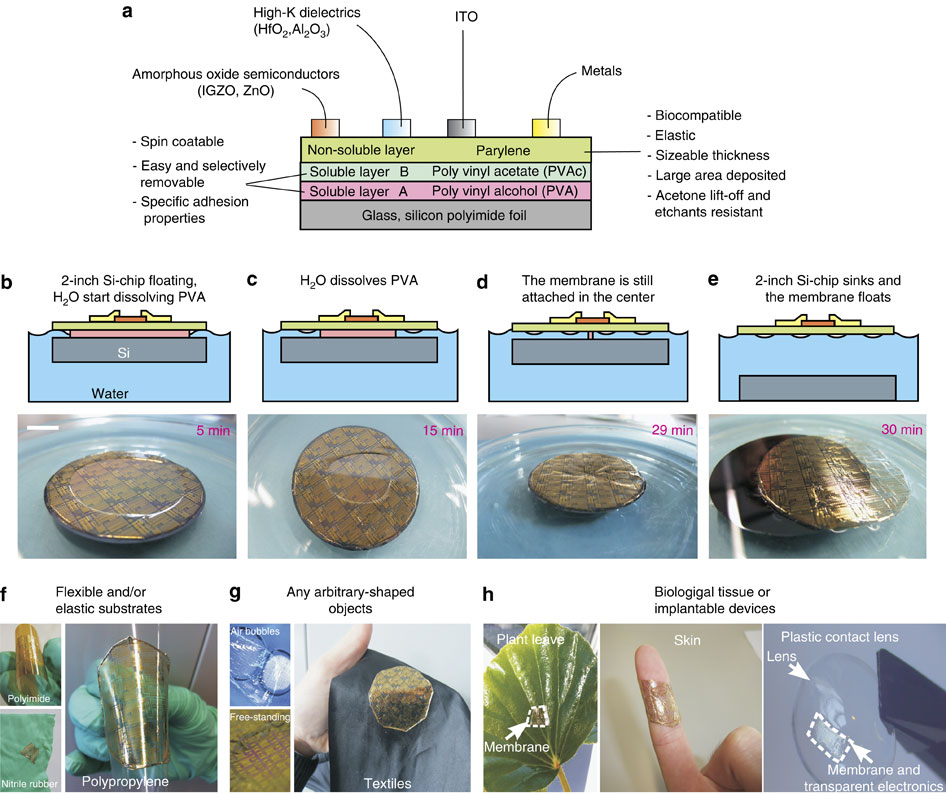Nature子刊:一种简单方法将柔性传感器转移到生物组织表面上
瑞士联邦理工学院电子实验室的研究人员研发了一种将很薄的柔性、透明电子器件转移到几乎任何生物组织表面上的方法。这一简单方法的多用途性也许能为智能健康传感器提供更多可能性。相关文章发表于2014年1月7日的《Nature Communications》杂志上。

器件甚至还能被包裹在一根人发周围同时继续发挥功能。再加上生物兼容性,这一成果为有可能用于健康监测的智能隐形眼镜提供了新的可能性。
是否能够创造出可穿戴健康传感器,取决于是否能够将很薄的柔性器件转移到很多表面上。Giovanni Salvatore和他的研究小组研发出一种简单的方法,该方法可将一个下层(材料)溶在水中,从而使晶体管器件能够与一个厚基质脱离。所剩余的基质(它支撑这些器件)可以是透明的,能粘附到柔性物体和生物组织上。这些研究人员通过将压力传感器转移到隐形眼镜(它们可用于监测青光眼)上演示了这一方法的潜力。
这一简单方法的多用途性也许能为智能健康传感器提供更多可能性。
原文摘要:
Wafer-scale design of lightweight and transparent electronics that wraps around hairs
Giovanni A. Salvatore, Niko Münzenrieder, Thomas Kinkeldei, Luisa Petti, Christoph Zysset,Ivo Strebel, Lars Büthe & Gerhard Tröster
Electronics on very thin substrates have shown remarkABLe bendability, conformability and lightness, which are important attributes for BioLogical tissues sensing, wearable or implantable devices. Here we propose a wafer-scale process scheme to realize ultra flexible, lightweight and transparent electronics on top of a 1-μm thick parylene film that is released from the carrier substrate after the dissolution in water of a polyvinyl– alcohol layer. The thin substrate ensures extreme flexibility, which is demonstrated by transistors that continue to work when wrapped around human hairs. In parallel, the use of amorphous oxide semiconductor and high-K dielectric enables the realization of analogue amplifiers operating at 12 V and above 1 MHz. Electronics can be transferred on any object, surface and on biological tissues like human skin and plant leaves. We foresee a potential application as smart contact lenses, covered with light, transparent and flexible devices, which could serve to monitor intraocular pressure for glaucoma disease.

